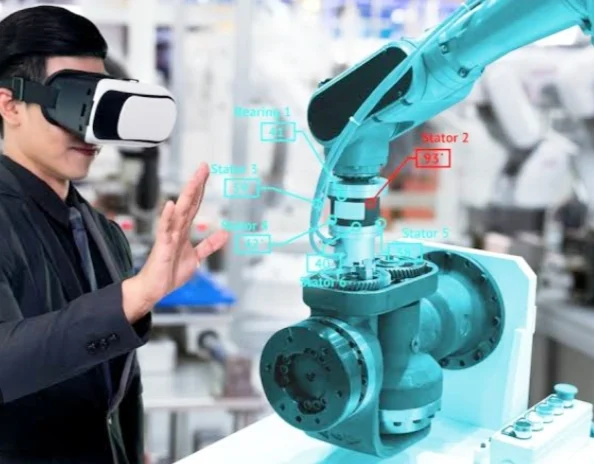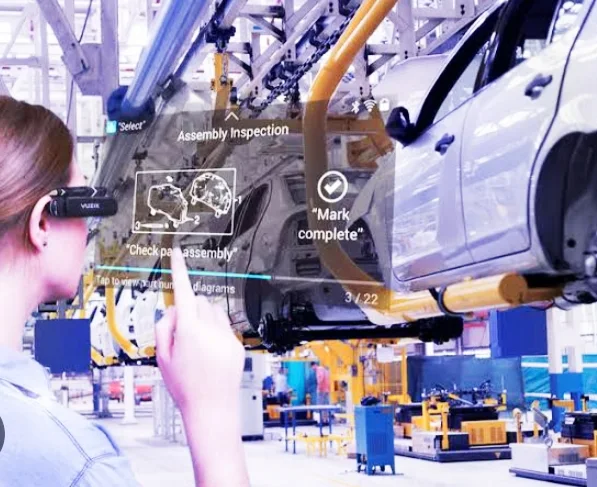Boeing VR Training
Boeing is utilizing virtual reality (VR) technology to enhance training programs across various departments, including astronauts, pilots, and manufacturing personnel. VR offers a safe, immersive, and cost-effective training environment with several advantages over traditional methods.
| Application | Benefits | Description |
|---|---|---|
| Astronaut Training https://varjo.com/boeing-starliner/ | - Practice complex procedures - Simulate emergency scenarios - Enhance spatial awareness | Astronauts can train for the entire mission cycle, from pre-launch to docking and landing, in a highly realistic VR environment. This allows them to familiarize themselves with the spacecraft layout, practice procedures in a safe setting, and prepare for potential emergencies. |
| Pilot Training https://www.vtrvr.com/ | - Improve muscle memory - Enhance situational awareness - Reduce training time and costs | VR simulations can replicate various flight scenarios, including normal operations, emergency situations, and different weather conditions. This allows pilots to practice procedures in a realistic environment and develop the necessary muscle memory for quick and accurate responses. |
| Manufacturing Training https://infivr.medium.com/-1e284bf4491e | - Improve assembly accuracy - Reduce learning time for complex tasks - Enhance safety training | VR simulations can be used to train employees on complex assembly tasks, allowing them to practice procedures in a safe and controlled environment. This can improve accuracy, reduce learning time, and minimize the risk of errors on the factory floor. |
VR training offers Boeing a flexible and scalable training solution. It can be easily adapted to different training needs and updated to reflect changes in procedures or equipment. Additionally, VR training can be conducted remotely, eliminating the need for travel and associated costs.
While VR offers significant benefits, it's important to note that it may not be suitable for all types of training. For example, VR simulations may not be effective for training soft skills such as communication and teamwork. However, VR is a valuable tool that can be used to complement traditional training methods and improve the overall learning experience.
Technology Uses in Boeing VR Training Project
Boeing's VR Training Project leverages a combination of cutting-edge technologies to create an immersive and effective learning environment. Here's a table outlining these key technologies and their functions:
Technology Function Virtual Reality (VR) Headset The core device worn on the user's head, displaying a realistic 3D virtual environment. Motion Tracking Tracks the user's head and body movements for intuitive interaction with the VR environment. Simulation Software Creates customized VR environments specific to the training scenario, such as a plane cockpit or spaceship interior. 3D Audio Delivers realistic sounds that adapt to the user's location and actions within the VR environment, enhancing realism and immersion. Haptic Feedback (Optional) Provides the user with tactile feedback in the form of vibrations or pressure for a more realistic interaction with virtual objects.
Beyond these core technologies, Boeing's VR training system may also integrate with:
Technology Function Training Management Platform Software used to manage training programs, track trainee progress, and analyze performance data. VR Controllers (Optional) Handheld devices that allow users to interact with virtual objects and control their actions within the VR environment.
By combining these technologies, Boeing creates an immersive and realistic VR training environment, enabling trainees to practice in a safe and controlled setting.
Boeing's VR Training Project leverages a combination of cutting-edge technologies to create an immersive and effective learning environment. Here's a table outlining these key technologies and their functions:
| Technology | Function |
|---|---|
| Virtual Reality (VR) Headset | The core device worn on the user's head, displaying a realistic 3D virtual environment. |
| Motion Tracking | Tracks the user's head and body movements for intuitive interaction with the VR environment. |
| Simulation Software | Creates customized VR environments specific to the training scenario, such as a plane cockpit or spaceship interior. |
| 3D Audio | Delivers realistic sounds that adapt to the user's location and actions within the VR environment, enhancing realism and immersion. |
| Haptic Feedback (Optional) | Provides the user with tactile feedback in the form of vibrations or pressure for a more realistic interaction with virtual objects. |
Beyond these core technologies, Boeing's VR training system may also integrate with:
| Technology | Function |
|---|---|
| Training Management Platform | Software used to manage training programs, track trainee progress, and analyze performance data. |
| VR Controllers (Optional) | Handheld devices that allow users to interact with virtual objects and control their actions within the VR environment. |
By combining these technologies, Boeing creates an immersive and realistic VR training environment, enabling trainees to practice in a safe and controlled setting.
Frequently Asked Questions for Boeing VR Training
Boeing VR Training offers immersive and interactive training experiences for its employees and customers using augmented reality (AR) and virtual reality (VR) technologies. Here are some common questions and answers:
Boeing VR Training offers immersive and interactive training experiences for its employees and customers using augmented reality (AR) and virtual reality (VR) technologies. Here are some common questions and answers:
General Questions
- What is Boeing VR Training?
- Boeing VR Training is a program that utilizes AR and VR technologies to provide realistic and engaging training simulations for employees and customers.
- How does Boeing VR Training benefit employees?
- VR training can improve employee safety, reduce training costs, and enhance knowledge retention by providing a hands-on and immersive learning experience.
- What types of training does Boeing VR offer?
- Boeing VR Training covers a wide range of topics, including aircraft maintenance, pilot training, and engineering design.
- What is Boeing VR Training?
- Boeing VR Training is a program that utilizes AR and VR technologies to provide realistic and engaging training simulations for employees and customers.
- How does Boeing VR Training benefit employees?
- VR training can improve employee safety, reduce training costs, and enhance knowledge retention by providing a hands-on and immersive learning experience.
- What types of training does Boeing VR offer?
- Boeing VR Training covers a wide range of topics, including aircraft maintenance, pilot training, and engineering design.
Technical Questions
- What hardware is required for Boeing VR Training?
- Boeing utilizes a variety of VR and AR headsets, including the Oculus Rift, HTC Vive, and Microsoft HoloLens.
- How is VR used in pilot training?
- VR can simulate flight scenarios, allowing pilots to practice emergency procedures and maneuvers in a safe and controlled environment.
- What is the role of AR in engineering design?
- AR can be used to visualize and interact with 3D models of aircraft components, aiding in design reviews and problem-solving.
- What hardware is required for Boeing VR Training?
- Boeing utilizes a variety of VR and AR headsets, including the Oculus Rift, HTC Vive, and Microsoft HoloLens.
- How is VR used in pilot training?
- VR can simulate flight scenarios, allowing pilots to practice emergency procedures and maneuvers in a safe and controlled environment.
- What is the role of AR in engineering design?
- AR can be used to visualize and interact with 3D models of aircraft components, aiding in design reviews and problem-solving.
Benefits and Challenges
- What are the benefits of VR training compared to traditional methods?
- VR training can provide a more engaging and effective learning experience, leading to improved knowledge retention and skill development.
- What are the challenges of implementing VR training?
- Challenges include the initial cost of hardware and software, the need for specialized training for instructors, and potential technical issues.
- How does Boeing ensure the effectiveness of VR training?
- Boeing conducts rigorous evaluations of VR training programs to measure their impact on employee performance and safety.
- What are the benefits of VR training compared to traditional methods?
- VR training can provide a more engaging and effective learning experience, leading to improved knowledge retention and skill development.
- What are the challenges of implementing VR training?
- Challenges include the initial cost of hardware and software, the need for specialized training for instructors, and potential technical issues.
- How does Boeing ensure the effectiveness of VR training?
- Boeing conducts rigorous evaluations of VR training programs to measure their impact on employee performance and safety.


